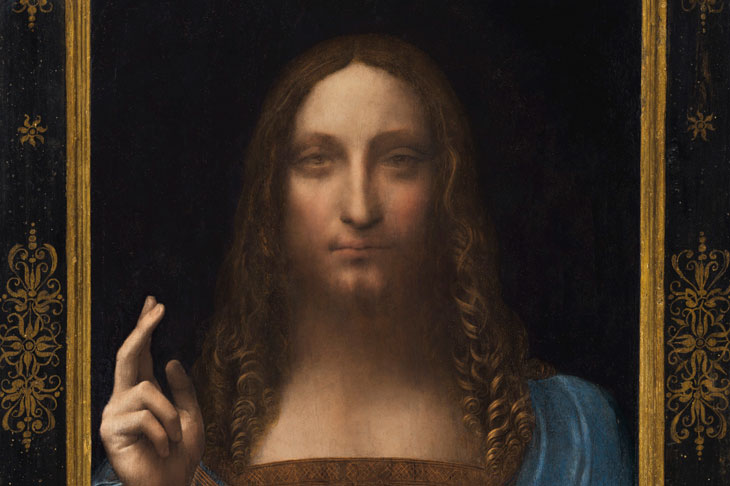This has been a bumper 12 months or so in the art market for Leonardo da Vinci’s most famous – come to think of it, only famous – son. At the end of 2016, the French auction house Tajan unveiled a small and fragmentary – but very beautiful – pen drawing of Saint Sebastian measuring 19.3 × 13.0 cm, which was subsequently export-stopped by the French state, and may one day end up in the Louvre. Now, on 15 November, Leonardo’s hauntingly intense panel of Christ as the Salvator Mundi is coming to the block at Christie’s, New York. They have decided to christen it ‘The Last Da Vinci’, but the one thing we can be sure of is the fact that there will be no shortage of candidates for that title in the future.
One of the oddities about both the Saint Sebastian and the Salvator Mundi is that their status as autograph works by the man himself is all but undisputed. More generally, however, it can feel as if hardly a month goes by without a new – and all too often far-fetched – candidate being proposed as a ‘new’ Leonardo. One might not unreasonably suppose that a select number of other greats among the Old Masters would be subjected to the same comical indignities just as often, but this does not seem to be the case. So – with apologies to the shade of Richard Hamilton – just what is it that makes Leonardo so different, so appealing?
Salvator Mundi (c. 1500), Leonardo da Vinci. Image courtesy Christie’s
Given the potential financial rewards, anyone might be forgiven for daydreaming about finding a Leonardo in a junk shop, but there is more to it than that. Without being able to prove it, I suspect there are two main reasons for Leonardo’s unique charisma. The first seems to relate to Walter Pater’s essay on him in The Renaissance (1873), and above all to his unforgettable ‘She is older than the rocks among which she sits…’ evocation of the Mona Lisa, which W.B. Yeats cut up into lines and included as the first ‘poem’ in his Oxford Book of Modern Verse (1936). Pater’s enthusiasm transformed Leonardo’s standing as an artist, and made his work seem both irresistibly mysterious and entrancingly timeless.
The second is the consequence of the theft of the Mona Lisa from the Louvre in 1911, an episode which these days is often forgotten, but was unsurprisingly a major sensation at the time, and was only resolved when the painting was recovered two long years later, in 1913. (In 1931, the episode inspired a German film called Der Raub der Mona Lisa.) As a result, it became the most famous work of art in the world, which meant that when Marcel Duchamp produced his notorious L.H.O.O.Q in 1919, he did not suffer sleepless nights worrying about whether people would recognise his prototype.
Given that there can be no stopping the flood-tide of dodgy and hitherto unrecognised Leonardos, what can his admirers reasonably hope for? Perhaps that one day it will once again be possible – as it was long ago – to get close enough to the Mona Lisa actually to be able to see it properly.
